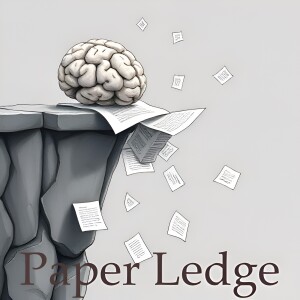
- Podcast Features
-
Monetization
-
Ads Marketplace
Join Ads Marketplace to earn through podcast sponsorships.
-
PodAds
Manage your ads with dynamic ad insertion capability.
-
Apple Podcasts Subscriptions Integration
Monetize with Apple Podcasts Subscriptions via Podbean.
-
Live Streaming
Earn rewards and recurring income from Fan Club membership.
-
Ads Marketplace
- Podbean App
-
Help and Support
-
Help Center
Get the answers and support you need.
-
Podbean Academy
Resources and guides to launch, grow, and monetize podcast.
-
Podbean Blog
Stay updated with the latest podcasting tips and trends.
-
What’s New
Check out our newest and recently released features!
-
Podcasting Smarter
Podcast interviews, best practices, and helpful tips.
-
Help Center
-
Popular Topics
-
How to Start a Podcast
The step-by-step guide to start your own podcast.
-
How to Start a Live Podcast
Create the best live podcast and engage your audience.
-
How to Monetize a Podcast
Tips on making the decision to monetize your podcast.
-
How to Promote Your Podcast
The best ways to get more eyes and ears on your podcast.
-
Podcast Advertising 101
Everything you need to know about podcast advertising.
-
Mobile Podcast Recording Guide
The ultimate guide to recording a podcast on your phone.
-
How to Use Group Recording
Steps to set up and use group recording in the Podbean app.
-
How to Start a Podcast
-
Podcasting
- Podcast Features
-
Monetization
-
Ads Marketplace
Join Ads Marketplace to earn through podcast sponsorships.
-
PodAds
Manage your ads with dynamic ad insertion capability.
-
Apple Podcasts Subscriptions Integration
Monetize with Apple Podcasts Subscriptions via Podbean.
-
Live Streaming
Earn rewards and recurring income from Fan Club membership.
-
Ads Marketplace
- Podbean App
- Advertisers
- Enterprise
- Pricing
-
Resources
-
Help and Support
-
Help Center
Get the answers and support you need.
-
Podbean Academy
Resources and guides to launch, grow, and monetize podcast.
-
Podbean Blog
Stay updated with the latest podcasting tips and trends.
-
What’s New
Check out our newest and recently released features!
-
Podcasting Smarter
Podcast interviews, best practices, and helpful tips.
-
Help Center
-
Popular Topics
-
How to Start a Podcast
The step-by-step guide to start your own podcast.
-
How to Start a Live Podcast
Create the best live podcast and engage your audience.
-
How to Monetize a Podcast
Tips on making the decision to monetize your podcast.
-
How to Promote Your Podcast
The best ways to get more eyes and ears on your podcast.
-
Podcast Advertising 101
Everything you need to know about podcast advertising.
-
Mobile Podcast Recording Guide
The ultimate guide to recording a podcast on your phone.
-
How to Use Group Recording
Steps to set up and use group recording in the Podbean app.
-
How to Start a Podcast
-
Help and Support
- Discover

Computer Vision - Seaweed-7B Cost-Effective Training of Video Generation Foundation Model
Hey PaperLedge crew, Ernis here, ready to dive into some fascinating new research!
Today, we're talking about video generation, which is basically teaching computers to create videos from scratch. Think of it like giving a computer a blank canvas and saying, "Okay, make me a movie!" Pretty wild, right?
Now, usually, these systems require massive amounts of computing power – like, supercomputer level – and cost a fortune to train. But a team of researchers has come up with a clever way to do it more efficiently. They've developed a model called Seaweed-7B and it's the star of our show today.
Here's the deal: training these video generation models is like teaching a child to paint. The more examples the child sees (the more data the model is trained on), and the more time you spend guiding them (the more computing power you use), the better they get. This team found ways to teach their "child" (Seaweed-7B) to paint masterpieces without needing all the resources. They used around 665,000 H100 GPU hours which sounds like a lot - and it is - but comparatively much less than other models.
They've essentially discovered smart shortcuts in the training process that allows their 7-billion-parameter model (think of parameters as the number of dials and knobs the computer can adjust to learn) to perform just as well, or even better, than models with way more "knobs" trained using significantly more resources. It's like figuring out how to bake a delicious cake with half the ingredients and still get a fantastic result!
"Design choices are especially crucial in a resource-constrained setting."So, why should you care? Well, there are a few reasons.
-
For the tech enthusiasts: This research shows that clever engineering and algorithmic design can overcome limitations in computing power. It’s about working smarter, not just harder.
-
For the creatives: More efficient video generation models mean easier access to powerful tools for creating art, animations, and special effects. Imagine being able to bring your wildest ideas to life without needing a Hollywood budget!
-
For everyone else: This technology has the potential to revolutionize fields like education, entertainment, and even scientific research. Think personalized learning experiences, interactive storytelling, and visualizing complex data in engaging ways.
But here's the really cool part: Seaweed-7B is also really good at generalizing. That means it can be easily adapted to new tasks and applications with just a little bit of extra training. It's like teaching that child to paint portraits, and then discovering they can also paint landscapes and still lifes with minimal additional instruction.
They can either do lightweight fine-tuning, which is a quick touch-up, or continue training with more data. So, after they have a pretty good baseline, they can make it even better for more specific tasks.
You can even see some examples of what Seaweed-7B can do over at seaweed.video, which is their project page.
This opens up all sorts of possibilities. Imagine customizing the model to generate videos of specific historical events, create training simulations for surgery, or even develop entirely new forms of visual communication. The possibilities are truly endless!
So, here are a couple of things I was pondering:
-
Could this approach be applied to other areas of AI, like image generation or natural language processing?
-
As these models become more accessible, what ethical considerations do we need to be aware of regarding the creation and distribution of AI-generated content?
That's all for today, PaperLedge crew! I hope you found this deep dive into Seaweed-7B as fascinating as I did. Keep learning, keep exploring, and I'll catch you on the next episode!
Credit to Paper authors: Team Seawead, Ceyuan Yang, Zhijie Lin, Yang Zhao, Shanchuan Lin, Zhibei Ma, Haoyuan Guo, Hao Chen, Lu Qi, Sen Wang, Feng Cheng, Feilong Zuo Xuejiao Zeng, Ziyan Yang, Fangyuan Kong, Zhiwu Qing, Fei Xiao, Meng Wei, Tuyen Hoang, Siyu Zhang, Peihao Zhu, Qi Zhao, Jiangqiao Yan, Liangke Gui, Sheng Bi, Jiashi Li, Yuxi Ren, Rui Wang, Huixia Li, Xuefeng Xiao, Shu Liu, Feng Ling, Heng Zhang, Houmin Wei, Huafeng Kuang, Jerry Duncan, Junda Zhang, Junru Zheng, Li Sun, Manlin Zhang, Renfei Sun, Xiaobin Zhuang, Xiaojie Li, Xin Xia, Xuyan Chi, Yanghua Peng, Yuping Wang, Yuxuan Wang, Zhongkai Zhao, Zhuo Chen, Zuquan Song, Zhenheng Yang, Jiashi Feng, Jianchao Yang, Lu Jiang
More Episodes
Create your
podcast in
minutes
- Full-featured podcast site
- Unlimited storage and bandwidth
- Comprehensive podcast stats
- Distribute to Apple Podcasts, Spotify, and more
- Make money with your podcast
It is Free
- Privacy Policy
- Cookie Policy
- Terms of Use
- Consent Preferences
- Copyright © 2015-2025 Podbean.com





